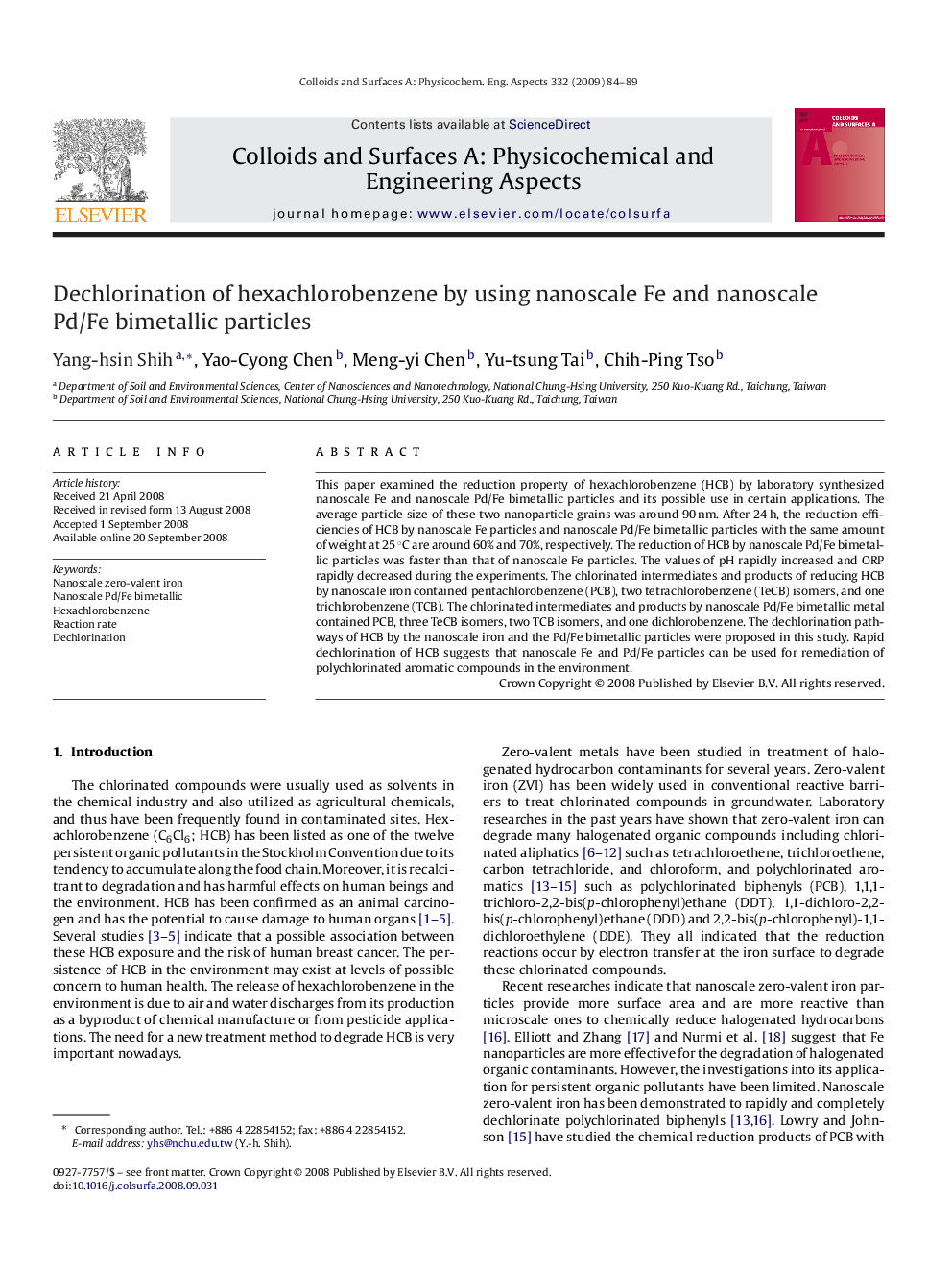| Article ID | Journal | Published Year | Pages | File Type |
|---|---|---|---|---|
| 596272 | Colloids and Surfaces A: Physicochemical and Engineering Aspects | 2009 | 6 Pages |
This paper examined the reduction property of hexachlorobenzene (HCB) by laboratory synthesized nanoscale Fe and nanoscale Pd/Fe bimetallic particles and its possible use in certain applications. The average particle size of these two nanoparticle grains was around 90 nm. After 24 h, the reduction efficiencies of HCB by nanoscale Fe particles and nanoscale Pd/Fe bimetallic particles with the same amount of weight at 25 °C are around 60% and 70%, respectively. The reduction of HCB by nanoscale Pd/Fe bimetallic particles was faster than that of nanoscale Fe particles. The values of pH rapidly increased and ORP rapidly decreased during the experiments. The chlorinated intermediates and products of reducing HCB by nanoscale iron contained pentachlorobenzene (PCB), two tetrachlorobenzene (TeCB) isomers, and one trichlorobenzene (TCB). The chlorinated intermediates and products by nanoscale Pd/Fe bimetallic metal contained PCB, three TeCB isomers, two TCB isomers, and one dichlorobenzene. The dechlorination pathways of HCB by the nanoscale iron and the Pd/Fe bimetallic particles were proposed in this study. Rapid dechlorination of HCB suggests that nanoscale Fe and Pd/Fe particles can be used for remediation of polychlorinated aromatic compounds in the environment.
